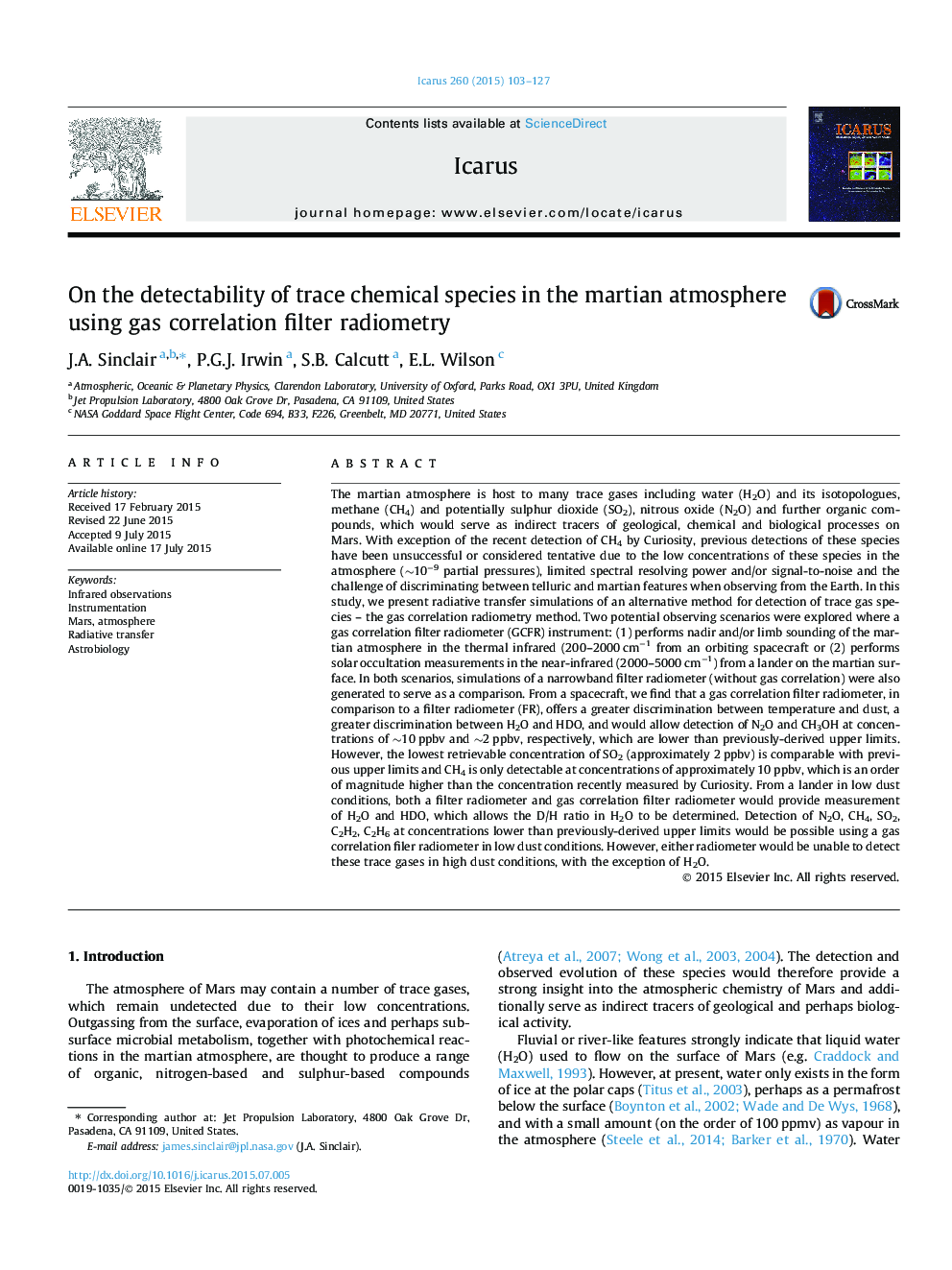| کد مقاله | کد نشریه | سال انتشار | مقاله انگلیسی | نسخه تمام متن |
|---|---|---|---|---|
| 8135994 | 1523530 | 2015 | 25 صفحه PDF | دانلود رایگان |
عنوان انگلیسی مقاله ISI
On the detectability of trace chemical species in the martian atmosphere using gas correlation filter radiometry
ترجمه فارسی عنوان
در تشخیص ردیابی مواد شیمیایی در فضای مریخ با استفاده از رادیومتری فیلتر همبستگی گاز
دانلود مقاله + سفارش ترجمه
دانلود مقاله ISI انگلیسی
رایگان برای ایرانیان
کلمات کلیدی
موضوعات مرتبط
مهندسی و علوم پایه
علوم زمین و سیارات
علوم فضا و نجوم
چکیده انگلیسی
The martian atmosphere is host to many trace gases including water (H2O) and its isotopologues, methane (CH4) and potentially sulphur dioxide (SO2), nitrous oxide (N2O) and further organic compounds, which would serve as indirect tracers of geological, chemical and biological processes on Mars. With exception of the recent detection of CH4 by Curiosity, previous detections of these species have been unsuccessful or considered tentative due to the low concentrations of these species in the atmosphere (â¼10â9 partial pressures), limited spectral resolving power and/or signal-to-noise and the challenge of discriminating between telluric and martian features when observing from the Earth. In this study, we present radiative transfer simulations of an alternative method for detection of trace gas species - the gas correlation radiometry method. Two potential observing scenarios were explored where a gas correlation filter radiometer (GCFR) instrument: (1) performs nadir and/or limb sounding of the martian atmosphere in the thermal infrared (200-2000Â cmâ1 from an orbiting spacecraft or (2) performs solar occultation measurements in the near-infrared (2000-5000Â cmâ1) from a lander on the martian surface. In both scenarios, simulations of a narrowband filter radiometer (without gas correlation) were also generated to serve as a comparison. From a spacecraft, we find that a gas correlation filter radiometer, in comparison to a filter radiometer (FR), offers a greater discrimination between temperature and dust, a greater discrimination between H2O and HDO, and would allow detection of N2O and CH3OH at concentrations of â¼10Â ppbv and â¼2Â ppbv, respectively, which are lower than previously-derived upper limits. However, the lowest retrievable concentration of SO2 (approximately 2Â ppbv) is comparable with previous upper limits and CH4 is only detectable at concentrations of approximately 10Â ppbv, which is an order of magnitude higher than the concentration recently measured by Curiosity. From a lander in low dust conditions, both a filter radiometer and gas correlation filter radiometer would provide measurement of H2O and HDO, which allows the D/H ratio in H2O to be determined. Detection of N2O, CH4, SO2, C2H2, C2H6 at concentrations lower than previously-derived upper limits would be possible using a gas correlation filer radiometer in low dust conditions. However, either radiometer would be unable to detect these trace gases in high dust conditions, with the exception of H2O.
ناشر
Database: Elsevier - ScienceDirect (ساینس دایرکت)
Journal: Icarus - Volume 260, 1 November 2015, Pages 103-127
Journal: Icarus - Volume 260, 1 November 2015, Pages 103-127
نویسندگان
J.A. Sinclair, P.G.J. Irwin, S.B. Calcutt, E.L. Wilson,
